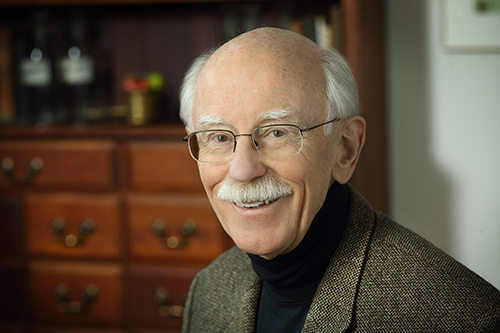Loneliness is the New Smoking: How Payers and Providers Should Address It
Loneliness leads to more healthcare utilization and decreases the likelihood of a positive health outcome post-hospital discharge-but it is underappreciated and rarely well addressed by the healthcare community.

Stephen C Schimpff, MD

Providers and payers should be taking steps to curb loneliness among all of their patients, particularly seniors. Loneliness is often a predisposition to health decline and disease onset. It leads to higher healthcare utilization including readmissions and decreases the likelihood of a positive health outcome following a hospital discharge.
Often driven by social isolation or feelings of social isolation and/or rejection, loneliness is also extremely common. In 2018, Cigna released results from a national survey of more than 20,000 Americans on loneliness. It noted that loneliness had reached “epidemic levels” in America, with nearly half of Americans reporting that they sometimes or always feel alone or left out.
The rate of loneliness among the elderly is slightly lower than the population at large, but the health effects can be even more devastating. A 2018 AARP survey of 6,343 Americans ages 45 and older found that 35% were lonely.
The link to health outcomes
Loneliness does not necessarily stem from physical isolation, but rather it’s often a perception of a patient’s relationship, or lack of relationships, with others. Individuals who are lonely and socially isolated often feel rejected by society, their peers, and/or their community.
This sense of continual rejection has long-term effects on health because it leads to a heightened outpouring of stress chemicals such as epinephrine and cortisol, leading to systemic low-grade inflammation that can affect the heart, brain, joints, and other organs. It leads to a decrease in immune function, leading to more infections and reduced ability to fall into restorative sleep.
Lonely people tend to eat poorly and sleep poorly, exercise minimally, are chronically stressed, and engage in few intellectual challenges. Essentially, loneliness damages many aspects of body functions, shortening the life span and predisposing individuals to the development of chronic illnesses such as obesity, diabetes, cardiac disease, depression, and a decline of cognitive skills.
Related article: Three Strategies That Improve Access to Rural Healthcare
When Cigna released its loneliness survey, Douglas Nemecek, MD, Cigna’s chief medical officer for behavioral health, stated in a report that loneliness has the same impact on mortality as smoking 15 cigarettes a day, making it even more dangerous than obesity. Others have equated its negative effects to a combination of smoking and diabetes combined.
A 2012 study in JAMA compared self-reported loneliness with health and mortality outcomes in 1,604 individuals over 60 years of age. Forty-three percent of them indicated some element of loneliness. Compared to the others, these individuals had more declines in mobility, reported difficulty in performing basic tasks of daily living, and had higher death rates over the ensuing six years.
While it’s difficult to calculate how much loneliness costs the industry, an AARP study from 2017 sheds some light. It found that Medicare spends approximately $134 more per month for each socially isolated older adult. Since an estimated four million older adults enrolled in traditional Medicare are socially isolated, according to the AARP, this represents an estimated $6.7 billion in additional Medicare spending annually.
What to do about the problem
Given its serious health consequences, physicians, hospitals, and payers need to understand what loneliness is, how it affects health outcomes, and how it can be addressed. Education of all three parties is critical. Unfortunately, loneliness is generally overlooked by the medical community and even when it is appreciated, physicians often feel ill equipped to manage it.
Physicians should actively screen for loneliness just as they would other social determinants of health, especially among older individuals. A few questions can serve as a brief screening, which can be followed up with 20 question from the
UCLA loneliness scale, which is an objective measure; a shorter form is also useful. Physicians should also take steps to ease loneliness and feelings of isolation among patients.
Primary care providers, especially, should watch for social isolation and factors that intensify it-such as hearing, mobility, or vision loss or sleep difficulties. These can be addressed directly or via an appropriate medical specialist referral. Other community options for loneliness include: senior centers for social engagement, exercise and specific programs, community transportation resources, and educational programs.
Primary care providers can also encourage these individuals to get involved in the community, such as through volunteering. Giving back can be rewarding to individuals who feel lonely, and provides a way to build new relationships.
The individual’s perception of his or her loneliness must be altered, perhaps with some relatively simple counseling, but often cognitive behavioral therapy is necessary to lessen the sense of isolation. It’s critical to shift the individual’s interpretation of social situations towards the positive.
Hospital executives need to get involved as well. They can incorporate loneliness screenings into pre-discharge conversations with patients and take steps to try to address loneliness when appropriate.
They must do more on the front-end to ensure socially or emotionally isolated/lonely patients are connected to appropriate resources. It is important to recognize that the patient will rarely initiate a request for help; the hospital will need to be proactive and make arrangements for resources such as social workers, psychologists, and health coaches to initiate contact with the patient.
Related article: The Biggest Barrier that Prevents Physicians from Providing Optimal Chronic Care
Although payers cannot directly manage loneliness, they can and must appreciate its impact, and support physicians and hospitals in their efforts to curb loneliness. They can do this through reimbursement that enables providers to spend more time monitoring and addressing loneliness during patient visits and hospital encounters. And payers must understand that success will depend on the integration of many other health and community professionals.
Payers can also help by increasing reimbursement for remote care services, which enable physicians and staff to check in more often with socially isolated or lonely patients in between visits, through phone calls, e-visits, or even text messages.
Given the human and monetary costs of loneliness to the healthcare system and to payers, both commercial and governmental, it only stands to reason that payers, hospitals, and physicians give loneliness the consideration it deserves, but which is currently sorely lacking.
There’s no pill that can treat loneliness. It requires a different set of tools: time and community resources. It’s time to give physicians and hospitals what they need to address the problem.
Stephen C Schimpff, MD, MACP, is a quasi-retired internist, professor of medicine and public policy, former CEO of the University of Maryland Medical Center, senior advisor to Sage Growth Partners, and author of “Fixing the Primary Care Crisis” and “Longevity Decoded – The 7 Keys to Healthy Aging.”
This week on Tuning Into The C-Suite Briana Contreras spoke with Dr. Scott Hayworth, president and CEO of New York-based CareMount Medical. In this interview, the two discussed the importance of patients staying in contact with their doctors for the sake of reducing public health risks and to discuss ongoing care options with them.
Listen
Eric Levin talks PBMs and how Scripta is Tackling the Market's Challenges for Patients
July 22nd 2020MHE's Briana Contreras spoke with CEO of Scripta, Eric Levin. The two discussed the current state of the pharmacy benefit market and how the Scripta organization has been assisting its clients and their prescriptions prior to the COVID-19 pandemic and during.
Listen